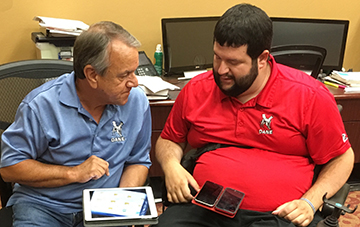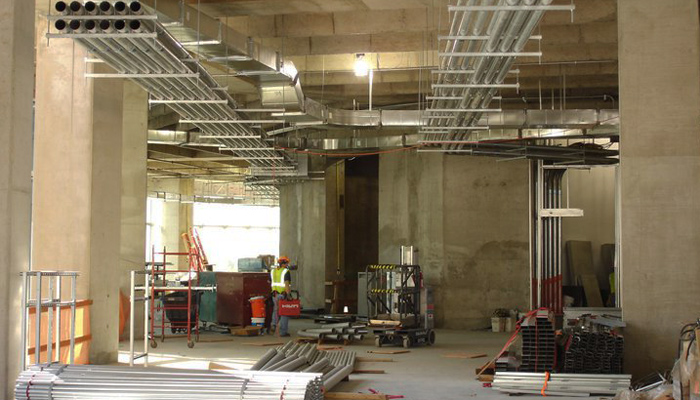Dane & Associates Electric Company manages multiple construction projects at any given time ranging from the installation of equipment inside a $2 million wind turbine, to ensuring the power systems for life support work properly in a hospital, or repairing a fuel monitoring system in an international airport.
They not only do an incredible amount of critical work in the field, they manage an incredible amount of information.
The Oklahoma City-based regional electrical contractor shares a huge variety of data with its coworkers, customers, regulatory agencies, security contractors, building owners, and more. Not long ago, it was common for Dane’s construction managers to carry around rolls of project drawings that often weighed considerably more than their heaviest toolbelt, or even an industrial-grade power tool.
But times change, and two years ago they introduced tablet computers and the SKYSITE Projects app to their team to help lighten the load.

Construction manager Chic Harrison said, “When our foremen are looking at an empty room and need detailed drawings to do their work, instead of having to carry around twenty pounds of paper with no place to set it down, they can just pull up their tablets and answer any questions that we might have for that particular issue.”
Since 1976, Dane & Associates has been known for their thorough analysis to provide the best electrical solutions for new construction, clinics, hospitals, entertainment venues and more. They are acutely aware of how technology changes quickly, and how those changes can affect both their clients’ and their own businesses.

“We always want to remain relevant in our industry,” says Jeff Lewis, Dane’s president. “That means that every few years we have to reinvent ourselves. Computers and iPads are on the jobsites now, and if you’re not ahead of the game then you’re behind.”
No one wants to be behind in accessing or providing information on important jobs.
Jackie Sing, another of Dane’s construction managers said, “Being able to communicate with the guys in the field and look at the same thing saves us a lot of time in an eight-hour day. If we get a new set of prints, a change order, or anything like that, the guy in the field can have it as soon as we get it. We don’t have to wait, go get it printed, go pick it up, and take it down to him. I don’t know about Chic, but I’m on that thing four or five times a day with different projects, and our field foremen.”
Chic, who was listening nearby, held up his tablet. “I’m on it now!” he said. “I’ve got maybe ten projects under me, and I can keep all ten jobs and plans with me, at all times, on my iPad. That’s probably one of the main reasons we needed SKYSITE in the first place.”
As a commercial and industrial electrical contractor, Dane works with a wide variety of other types of construction professionals, designers, engineers, and suppliers. Not all of them have embraced cloud-based tools in the same way, so Dane still prints when necessary. But where they used to print every drawing and document, they now print one or two sets for installation purposes, and those are usually on 11 x 17 size paper rather than the standard engineering size blueprints. Still, it’s the tablet that rules the job site.
“Sometimes you have to have the whole set – architectural, structural, mechanical – not just electrical, because engineers can refer to other drawings.” says Chic. “We put everything on SKYSITE.”
Dane references other documents on the job, too, like spec books, submittals, and safety regulations.
“Even though we are required to use stuff on paper to give to the general contractors, we still have it on SKYSITE for our guys,” Jackie said. “I build my entire job on SKYSITE; every single item, any type of communication. I like to build them thoroughly on SKYSITE because some of my guys like to look at it at night when they don’t have the stress of the day on them. They can look ahead and see what they need to order, and figure things out. They’re doing their own admin and uploading, so it’s easy to use.”
Dane’s preconstruction and construction management teams were the first to adopt SKYSITE, but they received no pushback from the foremen in the field once they saw how easy it was to use.
It’s become part of the company, now; the organization and communication backbone for their projects.
“If we had to go back to paper it would be like going back to the stone age!” Jackie said.





